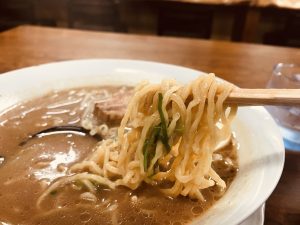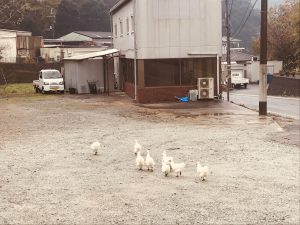This time, I went to Takamatsuzuka Tomb and Kitora Tomb in Asuka Village.
First, I headed from the National Asuka History Building to Takamatsuzuka Tomb, which is very close to the Takamatsuzuka Mural Building.
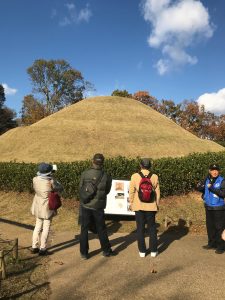
In the Takamatsuzuka Mural Building, a life-size replica of the stone room and murals are displayed, so you can see intricate details of the murals.
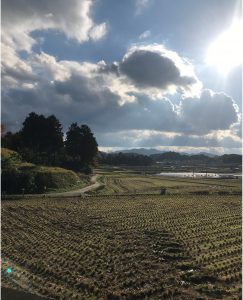
After seeing the images, I saw the actual Takamatsuzuka Tomb, and then passed through some of Asuka Village’s rice paddies on my way to Kitora Tomb.
It’s about a 20-minute walk from Takamatsuzuka Tomb to Kitora Tomb. Though it’s just 1.5 kilometers, you can see a very photogenic landscape that resembles an ancient farming village so much that people say that Asuka Village is the original landscape of Japan.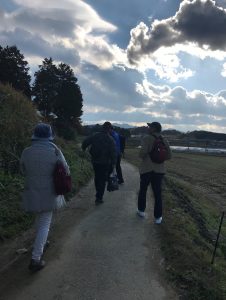
I walked slowly while taking some photos, and arrived at Kitora Tomb before I realized it.
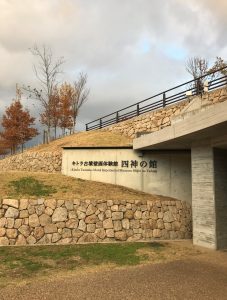 I arrived at Kitora Tomb and first headed to the Shijin-no-yakata in the Center for Preservation of Kitora Tumulus Mural Paintings.
I arrived at Kitora Tomb and first headed to the Shijin-no-yakata in the Center for Preservation of Kitora Tumulus Mural Paintings.
Just like the Takamatsuzuka Tomb’s mural building, the Shijin-no-yakata displays life-size replicas of the stone room and murals. You can also see detailed images of the murals that depict the “shijin (four gods)”, as well as astronomical charts.
There is also material related to the excavation, inquiry, and research of Kitora Tomb that is on display, and you can learn how archaeological research is done in Japan.
After seeing and learning at the Shijin-no-yakata, I went and saw the actual Kitora Tomb.
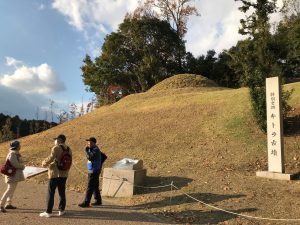
A trip in Asuka Village, tracing the history of Japan.
How about giving it a try yourself?

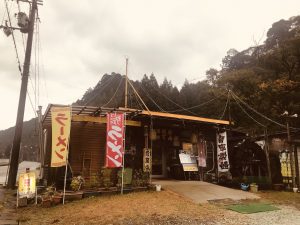 Or at least, that’s how it feels when I visit Yottenka in Yoshino Town. It’s a small, stand-alone wooden shop, attached to old truck beds, and with a wooden water wheel in front. Inside is the kind of warm atmosphere that is difficult for visitors to Japan to discover on their own. Shelves of comic books, a box of local fruit, a counter facing the kitchen, and a well-worn center table. In addition to standard flavors like miso, soy sauce, and salt ramen, they have a special sesame ramen, a spicy beansprout ramen, and even chilled ramen for hot summer days.
Or at least, that’s how it feels when I visit Yottenka in Yoshino Town. It’s a small, stand-alone wooden shop, attached to old truck beds, and with a wooden water wheel in front. Inside is the kind of warm atmosphere that is difficult for visitors to Japan to discover on their own. Shelves of comic books, a box of local fruit, a counter facing the kitchen, and a well-worn center table. In addition to standard flavors like miso, soy sauce, and salt ramen, they have a special sesame ramen, a spicy beansprout ramen, and even chilled ramen for hot summer days.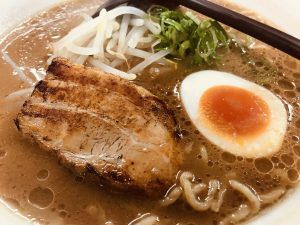 When I went there for lunch the other day, I ordered the miso ramen and gyoza set. The noodles seemed to absorb the flavorful miso soup, as did the slice of pork, which slowly softened as I saved it for last. The gyoza came out hot and fresh, smelling of garlic as I dipped each bite into the spicy red oil. I said “gochisosama” to kind old man and exited the shop with a full stomach.
When I went there for lunch the other day, I ordered the miso ramen and gyoza set. The noodles seemed to absorb the flavorful miso soup, as did the slice of pork, which slowly softened as I saved it for last. The gyoza came out hot and fresh, smelling of garlic as I dipped each bite into the spicy red oil. I said “gochisosama” to kind old man and exited the shop with a full stomach. 